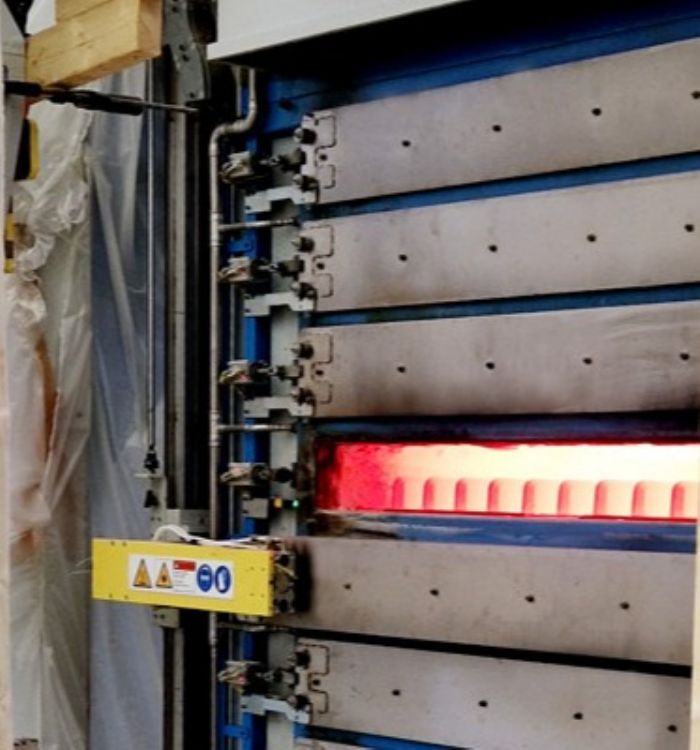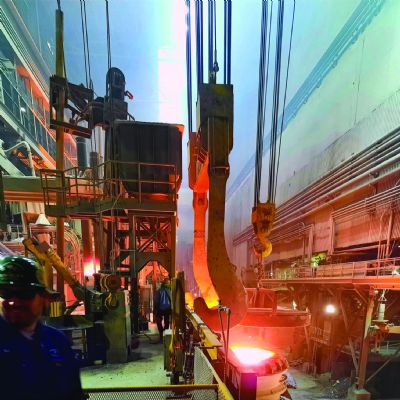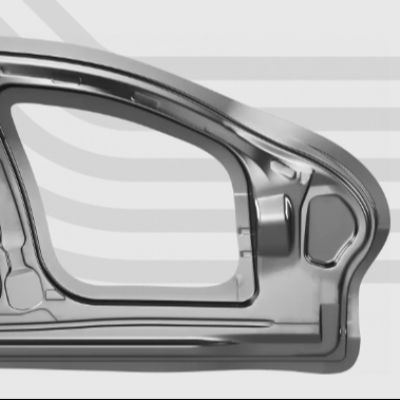Furnace Ideal for Press Hardening of High-Strength Al-Si-Coated Steel
December 11, 2024Comments
 AP&T's multi-layer furnace is well-suited for press
hardening sheet metal with strength in the 1800-2000-MPa range as confirmed by
tests that AP&T recently conducted with ArcelorMittal to investigate the
risks of hydrogen embrittlement, according to officials from the
press-technology manufacturer.
AP&T's multi-layer furnace is well-suited for press
hardening sheet metal with strength in the 1800-2000-MPa range as confirmed by
tests that AP&T recently conducted with ArcelorMittal to investigate the
risks of hydrogen embrittlement, according to officials from the
press-technology manufacturer.
By using ultra-high-strength steels with reduced thickness for press-hardened components, vehicle manufacturers can continue to reduce vehicle weight, thus energy consumption, while maintaining or increasing safety. However, steel with a tensile strength to 2000 MPa makes greater demands on process control and monitoring to reduce the risk of hydrogen embrittlement. This phenomenon occurs when hydrogen from the surrounding air migrates into the sheet metal during heating, making it more brittle and susceptible to cracking. Hydrogen embrittlement is particularly concerning in the automotive industry, especially in hot and humid countries where press-hardened steel components are produced. Keeping this risk under control demands regulation of the dew point of the furnace air, or the temperature at which the air becomes saturated with moisture and water vapor begins to condense into liquid water, according to AP&T officials.
To explore effective combating of hydrogen embrittlement, AP&T with ArcelorMittal recently tested press-hardening components produced with the ultra-high-strength Al-Si-coated material, Usibor 2000 AS, in an AP&T multi-layer furnace in a humid environment. The aim: determine whether the furnace’s dew-point regulation, via dry-air injection, is efficient enough for avoiding hydrogen embrittlement, even under worst-case conditions. At AP&T's development department in Ulricehamn, Sweden, a climate chamber, featuring 70% relative humidity and 30 C temperature, was built around the furnace used in the testing.
When the furnace door was opened and the material placed inside, air entered from the surroundings. To reduce humidity and thus regulate dew point, dry air was injected into the chamber. A number of tests were carried out, supplying both large and small amounts of dry air under rising furnace temperatures. Sheet metal blanks, at temperatures of 900 C, were removed from the furnace, then pressed and quenched down to about 80 C in a tool.
Results showed that the hydrogen content in Usibor 2000 AS remained low, around 0.1 ppm, regardless of whether large or small amounts of dry air were injected in the process. Conclusion: the dew-point-regulation system with dry-air injection proved efficient to minimize the hydrogen intake with aluminized press-hardening steels. Thus the AP&T multi-layer furnace was found well-suited for the safe production of parts with aluminized press-hardening steels in strengths to 2000 MPa.
View Glossary of Metalforming Terms
See also: AP&T North America Inc.
Technologies: Stamping Presses
Comments
Must be logged in to post a comment. Sign in or Create an Account
There are no comments posted.The Automation Revolution in Hot Stamping
Katrina Geenevasen September 23, 2024
 Stamping Presses
Stamping PressesFagor Arrasate Begins Expansion of Its Mondragón, Spain Plan...
Friday, July 11, 2025







